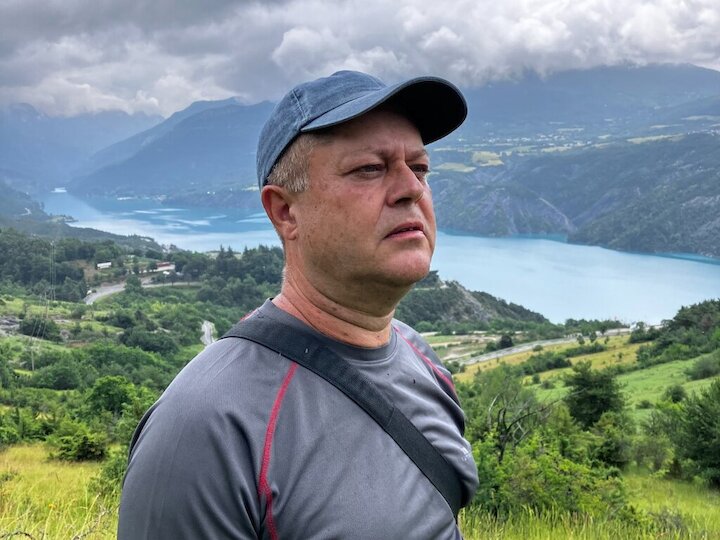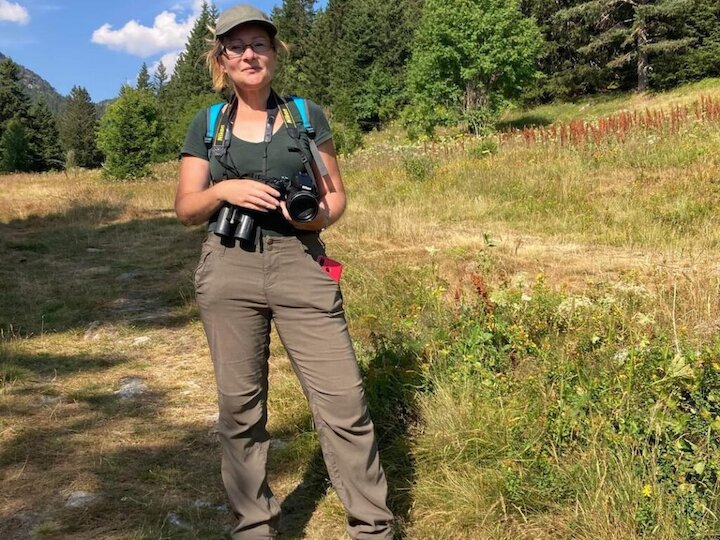This end of spring tour to the Eastern French Pyrenees is heaven-sent for all those who love beautiful, diverse countryside, a wide smorgasbord of fabulous butterflies, and an array of attractive orchids set in undulating hills around the sacred, 2,784m Catalonian peak of Mt Canigou.
An interesting and eclectic range of habitat is on offer in this region, from the drier maquis and garrigue to the east near Perpignan, to verdant mid-altitude tracks around the Canigou massif as well as the more austere, inland montane plateau close to the Spanish border, and the delightfully green, damp meadows and roadsides of the Aude Valley.
As a consequence, we can expect butterflies with a wide background of habitat preferences, and anticipate around 90 species likely to be recorded over the course of the week.
The more Mediterranean-influenced terrain will provide the dry, scrub loving species such as Western Marbled White Melanargia occitania, Cardinal Argynnis pandora, Spanish Gatekeeper Pyronia bathseba, Dusky Heath Coenonympha dorus, Green-underside Blue Glaucopsyche alexis, Lulworth Skipper Thymelicus acteon, Spanish Festoon Zerynthia rumina, Cleopatra Gonepteryx cleopatra, and maybe even Two-tailed Pasha Charaxes jasius, at a known hilltopping site close to the town of Millas. There will also be good numbers of the beckeri form of Marsh Fritillary Euphydryas aurinia, a larger, more brick-red version of the insect found in several parts of the UK.
There is also the possibility of seeing arguably France’s rarest butterfly, Spanish Fritillary Euphydryas desfontainii. We will visit two quarries close to the village of Sournia where we have recorded it twice before.
In the lower reaches of the mountains around Canigou, the roadside banks will play host to Apollo Parnassius apollo, Clouded Apollo Parnassius mnemosyne, Sooty Copper Lycaena tityrus, Provence Orange Tip Anthocharis euphenoides, Provençal Fritillary Melitaea deione, Oberthür’s Grizzled Skipper Pyrgus armoricanus, Chequered Blue Scolitantides orion, Black-veined White Aporia crataegi, Southern White Admiral Limenitis reducta, Meadow Fritillary Melitaea parthenoides, and plenty more.
The Aude Valley traditionally provides a different selection of butterflies, with Chequered Skipper Carterocephalus palaemon, Bright-eyed Ringlet Erebia oeme, Map Araschnia levana and Silver-studded Blue Plebejus argus on the likely menu, alongside other desirables en route, such as Purple-edged Copper Lycaena hippothoe, Amanda’s Blue Polyommatus amandus, and Pearl-bordered Fritillary Boloria euphrosyne, not to mention several beautiful species of flowering orchid which can be seen in meadows along the roadsides, including Bug Orchid Anacamptis coriophora, while roadside verges themselves harbour magnificent Military Orchid Orchis militaris.
The highlight of the tour however is the visit to 1,500m, following the spectacular railway upon which the famous ‘petit train jaune’, runs. This will seem like going back in time, as the high temperatures and advanced vegetation of the lower eastern areas give way to wild daffodil-strewn fields and damper, marshier terrain near the villages of Eyne and Llo. It will be hard to believe it is late May as the leaves on the trees will largely yet to have unfurled, but there is one iconic butterfly that relishes these conditions – the rare, endangered and beautiful Violet Copper Lycaena helle.
Other species to be found in this higher altitude terrain are Green Hairstreak Callophrys rubi, De Prunner’s Ringlet Erebia triarius, the montane debilis form of Marsh Fritillary, Swallowtail Papilio machaon, Mazarine Blue Cyaniris semiargus, and Safflower Skipper Pyrgus carthami.
This tour also allows good sightings of many of the raptors to be found in this region, with Griffon Vultures Gyps fulvus a regular companion, and even the occasional Lammergeier Gypaetus barbartus.
This tour is the perfect way to end spring with a treasure chest full of butterflies, orchids, birds and beautiful landscapes. We hope you will enjoy seeing for yourself what makes this close to the perfect European destination at this time of year.








































